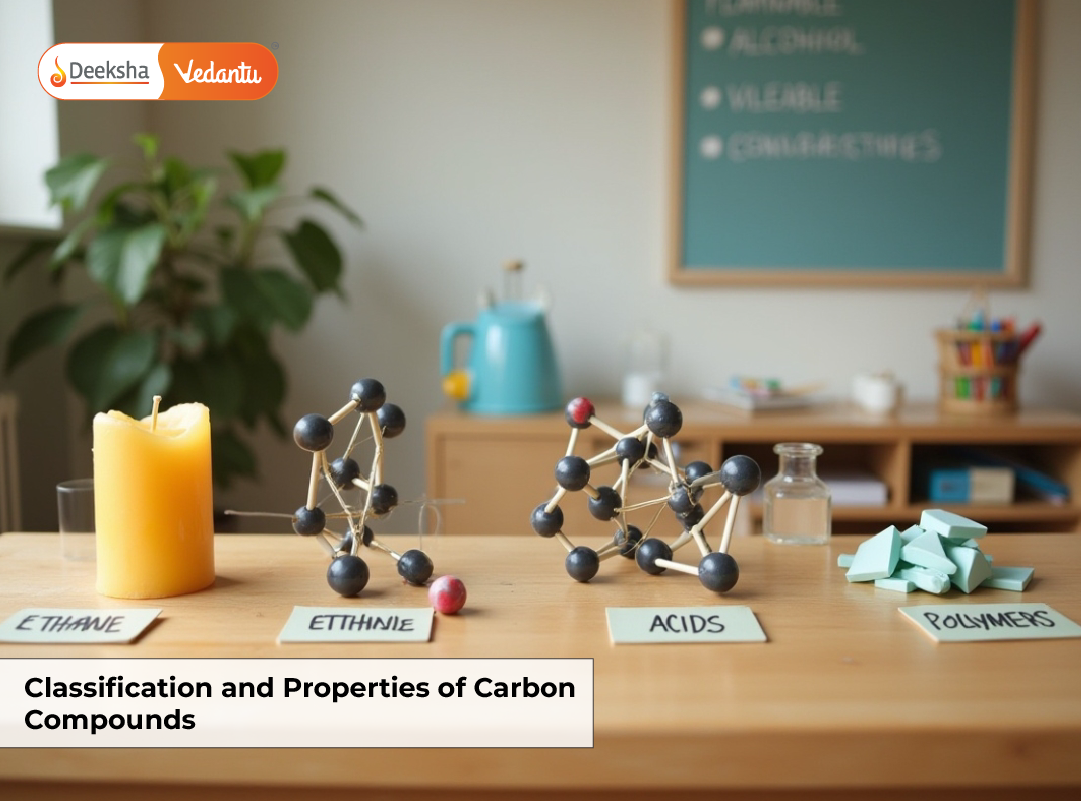Introduction
In the realm of 10th-grade mathematics, the twin pillars of geometry and trigonometry hold immense significance. These subjects not only lay the foundation for higher studies but also shape students’ problem-solving skills. As we embark on this journey, our overarching goal is clear: to understand how to score good marks in maths. Geometry and trigonometry are not just academic pursuits; they are valuable tools that empower students with practical knowledge and analytical thinking. So, let’s explore the importance of these subjects and uncover the strategies that lead to success in the world of numbers and shapes.
Navigating the World of Geometry and Trigonometry
In the landscape of 10th-grade mathematics, geometry and trigonometry stand as essential pillars, each with its unique significance. Geometry delves into the study of shapes, sizes, and properties, while trigonometry explores the intricate relationships between angles and sides. These subjects not only enrich students’ mathematical knowledge but also nurture critical thinking and problem-solving abilities. As we embark on this journey, it is imperative to begin with an introduction to trigonometry class 10, a fundamental step in comprehending the world of triangles and angles. Together, geometry and trigonometry form an integral part of the 10th-grade curriculum, equipping students with the tools to conquer mathematical challenges.
Importance of Geometry and Trigonometry in 10th Grade
Geometry and trigonometry hold a pivotal role in the 10th-grade curriculum, offering students invaluable insights and skills. Firstly, these subjects foster logical reasoning and problem-solving abilities, which are essential life skills. Geometry introduces students to the world of shapes and spatial relationships, honing their spatial intelligence. Meanwhile, trigonometry unlocks the secrets of angles and their applications.
Moreover, the real-world relevance of trigonometry cannot be overstated. It finds practical applications in fields such as architecture, engineering, astronomy, and navigation. When students delve into applications of trigonometry class 10 and explore real-life scenarios, they discover how this mathematical discipline influences the world around them. From calculating heights of structures to determining distances using triangulation, trigonometry plays a role in everyday life.
In essence, geometry and trigonometry equip 10th-grade students with the knowledge and skills needed for both academic success and real-world problem-solving, making them subjects of utmost importance in their educational journey.
Geometry Fundamentals: Essential Concepts for Success
In the 10th grade, geometry serves as a cornerstone of mathematical education. It introduces students to a fascinating world of shapes, sizes, and spatial relationships. Some fundamental geometry concepts that students delve into include points, lines, angles, triangles, polygons, and circles. These concepts form the basis for advanced geometry topics and are vital for solving various real-life problems.
One key subtopic that deserves special attention is class 10 coordinate geometry. This branch of geometry merges algebraic techniques with geometric concepts, allowing students to study points and figures in a coordinate system. It’s an essential skill for tackling problems that involve graphs and coordinates.
Additionally, mastering geometry involves extensive practice. Class 10 trigonometry questions are integral components of this practice. Solving these questions enhances problem-solving skills and provides a deeper understanding of the subject.
In essence, grasping the fundamental geometry concepts in the 10th grade, including coordinate geometry, and practicing with trigonometry questions, paves the way for success in this intriguing mathematical discipline.
Top 10 Geometry Questions for 10th Graders
- Triangles and Angles: Prove that the sum of the angles in any triangle is 180 degrees.
- Pythagorean Theorem: Given a right triangle with legs of lengths 6 cm and 8 cm, find the length of the hypotenuse.
- Circles and Circumference: Calculate the circumference and area of a circle with a radius of 4 cm.
- Area and Perimeter: Find the area and perimeter of a rectangle with dimensions 10 cm by 15 cm.
- Similar Triangles: Prove that two triangles are similar given their corresponding angles and side lengths.
- Quadrilaterals: Determine the area of a trapezoid with bases of 8 cm and 5 cm, and a height of 4 cm.
- Volume of Solids: Calculate the volume of a cylinder with a radius of 3 cm and a height of 10 cm.
- Surface Area: Find the surface area of a sphere with a radius of 5 cm.
- Transformation Geometry: Describe the image of a shape after a reflection over a given line.
- Proofs and Theorems: Prove that the diagonals of a parallelogram bisect each other.
Top 5 Trigonometry Questions for 10th Graders
- Sine, Cosine, and Tangent: Calculate the sine, cosine, and tangent of a 45-degree angle.
- Trigonometric Identities: Prove the identity sin²θ + cos²θ = 1 for any angle θ.
- Trigonometric Ratios: Find the length of a side in a right triangle given an angle and the length of another side.
- Angles of Elevation and Depression: Solve a real-world problem involving an angle of elevation or depression.
- Trigonometry in Circles: Calculate the length of an arc of a circle with a given radius and central angle.
Navigating life after 10th grade
Top 5 questions combining Trigonometry and Geometry
- Triangle Area and Sine Function: Given a triangle with sides of length 7 cm, 8 cm, and 9 cm, calculate the area of the triangle using the sine function.
- Circle and Trigonometric Ratios: A circle has a radius of 10 cm. A sector of this circle forms an angle of 30 degrees at the center. Calculate the length of the arc and the area of the sector using trigonometric ratios.
- Pythagorean Theorem and Trigonometry: In a right-angled triangle, the lengths of the two shorter sides are 6 cm and 8 cm. Calculate the angles of the triangle using trigonometric ratios and verify the lengths using the Pythagorean theorem.
- 3D Geometry and Trigonometry: A ladder 15 meters long is leaning against a wall. The foot of the ladder is 9 meters away from the wall. Using trigonometric ratios, calculate the angle that the ladder makes with the ground, and then find the height at which the ladder touches the wall.
- Trigonometric Heights and Distances: From a point on the ground, the angle of elevation to the top of a building is 45 degrees. If the point is 30 meters away from the base of the building, calculate the height of the building using trigonometry. Then, determine the diagonal distance from the point to the top of the building using Pythagorean theorem in 3D geometry.
Proven Strategies for Geometry Problem Solving
Solving geometry problems effectively requires a systematic approach. Start by thoroughly understanding the problem statement and visualizing the geometric figures involved. Identify key information and relationships before applying the appropriate theorems or formulas.
For tackling trigonometry-related challenges, class 10 trigonometry solutions serve as indispensable tools. These solutions provide step-by-step guidance for solving trigonometric problems, ensuring clarity in every solution.
A trigonometry class 10 worksheet is a valuable resource for practice. It offers a diverse range of problems, allowing students to hone their problem-solving skills and gain confidence in applying trigonometric principles.
By combining these problem-solving techniques with consistent practice using worksheets and solutions, students can navigate the intricate world of geometry with confidence and precision.
Trigonometry Unraveled: Tips for Easy Learning
Trigonometry, often perceived as a complex branch of mathematics, holds immense importance and real-world utility. It’s the science of measuring and understanding triangles, making it a vital tool for fields like engineering, physics, and even astronomy.
Approaching trigonometry problems step by step is key to mastering this subject. Begin by identifying the known values, such as angles or sides, and use the appropriate trigonometric ratios (sine, cosine, tangent) to find the unknowns systematically.
To gauge your understanding, consider using a trigonometry class 10 test paper. These papers provide a practical assessment of your trigonometric skills, allowing you to track your progress and ensure a strong grasp of this valuable mathematical discipline.
Books every 10th grader should read
Practical Applications of Geometry and Trigonometry
Geometry and trigonometry transcend the confines of the classroom, finding extensive real-life applications. In architecture, they dictate the design of buildings, ensuring structural stability and aesthetic appeal. Surveyors employ trigonometry to measure land and map landscapes accurately. Engineers rely on these subjects for construction projects, calculating angles and distances. Even in everyday life, navigation systems use trigonometric principles to determine locations. One might not realize it, but when gazing at the stars or using a GPS device, they are experiencing the practicality of trigonometry. These applications underscore the relevance of geometry and trigonometry, demonstrating how these mathematical disciplines shape our world.
Here’s a table illustrating various industries and how geometry and trigonometry play a crucial role in each:
| Industry | Application of Geometry and Trigonometry |
| Architecture | Designing buildings, ensuring structural stability |
| Surveying | Measuring land, mapping landscapes accurately |
| Engineering | Calculating angles and distances for construction |
| Astronomy | Celestial navigation, charting the heavens |
| Navigation | GPS systems, determining locations precisely |
| Physics | Analyzing motion, understanding waveforms |
| Geography | Cartography, creating accurate maps |
| Aviation | Navigational calculations, flight path planning |
| Agriculture | Precision farming, optimizing crop yields |
| Construction | Ensuring level foundations, aligning structures |
| Oceanography | Studying ocean currents, mapping underwater terrain |
| Computer Graphics | 3D modeling, rendering realistic images |
| Medicine | Medical imaging, surgical precision |
Scoring Well in Geometry and Trigonometry: A Winning Approach
In our exploration of geometry and trigonometry significance in the 10th grade, we’ve unearthed their fundamental role in mathematics. These subjects foster problem-solving skills and have practical applications in various fields. To excel, practice is paramount, with resources like trigonometry class 10 test paper aiding assessment. In summary, consistent effort and diligent practice are the keys to success in geometry and trigonometry. They not only enhance mathematical acumen but also contribute to the broader goal of how to score good marks in math. These subjects are not merely part of the curriculum; they are invaluable tools for academic and real-world challenges alike.
Table of Contents















Get Social